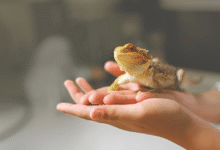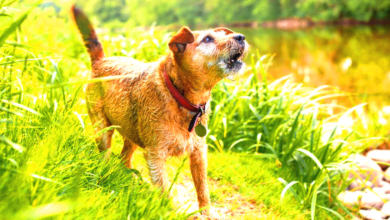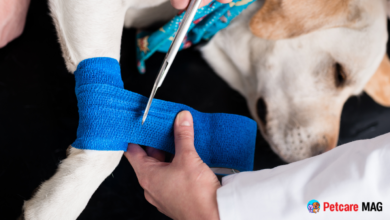
Leash Training for Rescue Dogs Tennessee Success Stories
Leash training for rescue dogs transforms Tennessee pups Discover success stories & proven techniques to help your rescue walk confidently.
Leash training for rescue dogs is a vital step in helping them transition from shelter life to loving forever homes. Many rescue dogs in Tennessee come from uncertain pasts, often lacking basic training or experiencing trauma that makes walks stressful. Proper leash training not only ensures their safety but also builds trust, reduces anxiety, and strengthens the bond between dog and owner. Through patience and positive reinforcement, even the most fearful or energetic rescue dogs can learn to walk confidently by your side.
Across Tennessee, countless heartwarming success stories prove how transformative leash training can be for rescue dogs. From shy strays learning to trust again to high-energy pups mastering loose-leash walking, these stories highlight the power of dedication and compassion. Whether you’ve recently adopted a rescue or are considering it, understanding the best leash training techniques will set you and your dog up for a lifetime of happy, stress-free walks together.
Leash Training for Rescue Dogs Tennessee Success Stories
Building Trust and Security Through Structure
Leash training provides essential structure for rescue dogs with uncertain backgrounds, helping them feel secure in their new environment. Many of these dogs have experienced neglect, abuse, or inconsistent care, leaving them anxious or unsure of human interactions. By introducing leash training with patience and consistency, owners establish clear boundaries and reliable routines. This predictability helps rescue dogs understand what’s expected of them, reducing stress and preventing behavioral issues like bolting or reactivity. In Tennessee, shelters prioritize this training before adoption.
Positive Reinforcement Creates Positive Associations
For rescue dogs unfamiliar with leashes, the first introduction must be gentle and rewarding. Since many have never worn a collar or leash, forcing the process can trigger fear or resistance. Trainers recommend letting the dog investigate the leash at their own pace, pairing it with treats and praise to build positive associations. Short, low-pressure sessions like clipping the leash on during mealtime or play help the dog acclimate without overwhelm. Over time, the leash becomes a signal for enjoyable activities (like walks or exploration) rather than a source of stress.
Success Stories from Tennessee Rescues
Buddy’s Journey from Fear to Confidence
Buddy, a mixed-breed rescue from a Nashville shelter, was terrified of leashes due to past trauma. His adoptive owner, Sarah, started by letting him sniff the leash indoors without attaching it. After a week, she clipped it to his collar for short periods while rewarding him with treats. Within a month, Buddy was walking confidently on a leash, even in busy parks. His transformation highlights the power of patience and consistency.
Luna’s Rehabilitation After a Hoarding Situation
Luna, a Beagle rescued from a hoarding case in Knoxville, had never been outside on a leash. Volunteers at the rescue center used a harness to prevent her from slipping free and began with short, supervised walks. Over time, Luna learned to walk without pulling, and her adoptive family continued her training with daily practice. Today, she enjoys hiking trails across Tennessee without anxiety.
Max’s Redemption from a High-Kill Shelter
Max, a German Shepherd mix, was hours away from euthanasia when a Memphis rescue saved him. His high energy made leash training challenging, but trainers incorporated play sessions to burn off excess energy before walks. Using a no-pull harness and reward-based techniques, Max became a well-behaved walking companion. His story proves that even the most energetic dogs can learn with the right approach.
Effective Leash Training Techniques
Start Indoors
Introduce the leash indoors where your rescue dog feels secure, allowing them to drag it during meals or play to build positive associations before outdoor training. Clip on the leash during enjoyable activities like feeding or games, using treats and praise to create happy connections that make future walks stress-free.
Use Positive Reinforcement
Immediately treat and praise when your dog walks politely beside you, reinforcing that calm leash behavior earns rewards while pulling gets them nowhere. The moment tension appears on the leash, become a “tree” (stop completely) and only resume walking when your dog releases pressure, teaching them loose leash walking through clear cause-and-effect.
Choose the Right Equipment
Front-clip harnesses gently redirect your dog’s momentum sideways when they pull, while head halters offer steering control without force both being safer, low-stress alternatives for strong pullers. Choke chains and prong collars may suppress pulling through discomfort but often increase anxiety in rescue dogs who already struggle with trust.
Keep Sessions Short and Positive
Keep initial leash training brief (10-15 minutes) to avoid overwhelming rescue dogs, ending on a positive note to build confidence and maintain engagement. Slowly extend training duration only when your dog shows relaxed body language and enthusiasm, ensuring they associate leash time with success rather than frustration.
Practice in Different Environments
First practice in a quiet backyard or empty park, letting your dog process outdoor stimuli at a comfortable distance before approaching busier environments. If your dog shows tension (panting, freezing, tail tucking), increase distance from distractions and shorten sessions.
Expert Tips for Long-Term Success
Be Patient Rescue dogs may take longer to learn, but Leash Training is key. Socialize Gradually Introduce them to other dogs and people in controlled settings. Monitor Body Language Signs of stress (panting, tucked tail) mean it’s time for a break. Seek Professional Help if Needed Trainers specializing in rescue dogs can provide personalized guidance.
Read More: Year-Round Pet Healthcare Checklist for Arizona Pet Owners
Conclusion
Leash training for rescue dogs is more than just teaching proper walking etiquette it’s a transformative journey that builds confidence, trust, and security for dogs who have often endured difficult pasts. The success stories from Tennessee prove that with patience, consistency, and positive reinforcement, even the most traumatized or energetic rescue dogs can learn to walk calmly on a leash. These happy endings remind us that every small step forward, whether it’s a loose leash walk around the block or a peaceful stroll through a busy park, is a victory worth celebrating.
As these Tennessee rescue dogs have shown, the right training approach can turn stressful walks into joyful bonding experiences. Whether you’re working with a fearful former stray or an excitable shelter pup, remember that leash training is an investment in your dog’s future and your relationship. By committing to gentle, reward-based methods, you’re not just teaching manners; you’re giving your rescue dog the freedom to safely explore the world by your side. The journey may take time, but the results a happy, well-adjusted companion are always worth it.
FAQs
How long does it take to leash train a rescue dog?
Every dog is different, but with consistent training, most rescue dogs show improvement within a few weeks. Some may take months, depending on their background.
What’s the best leash for a rescue dog?
A standard 6-foot leash works well, but dogs that pull may benefit from a front-clip harness or head halter for better control.
My rescue dog is scared of the leash. What should I do?
Start by letting them sniff the leash indoors without Leash Training it. Reward them for calm behavior and gradually introduce wearing it for short periods.
Should I let my rescue dog pull on walks?
No stop walking when they pull and resume only when the leash is slack. This teaches them that pulling doesn’t get them where they want to go.
Can older rescue dogs be leash trained?
Absolutely Older dogs can learn new habits with patience and positive reinforcement. Age is not a barrier to successful leash training.







